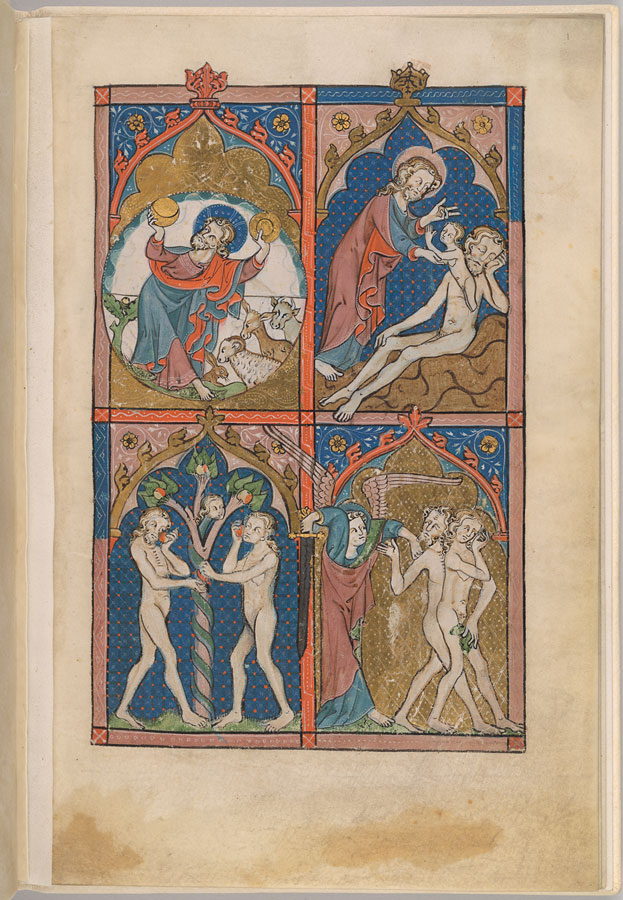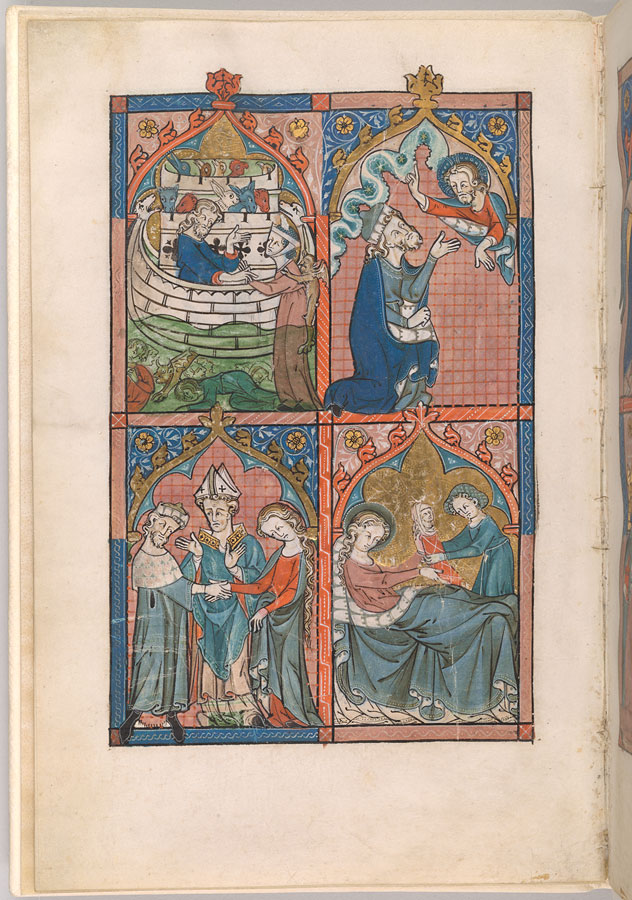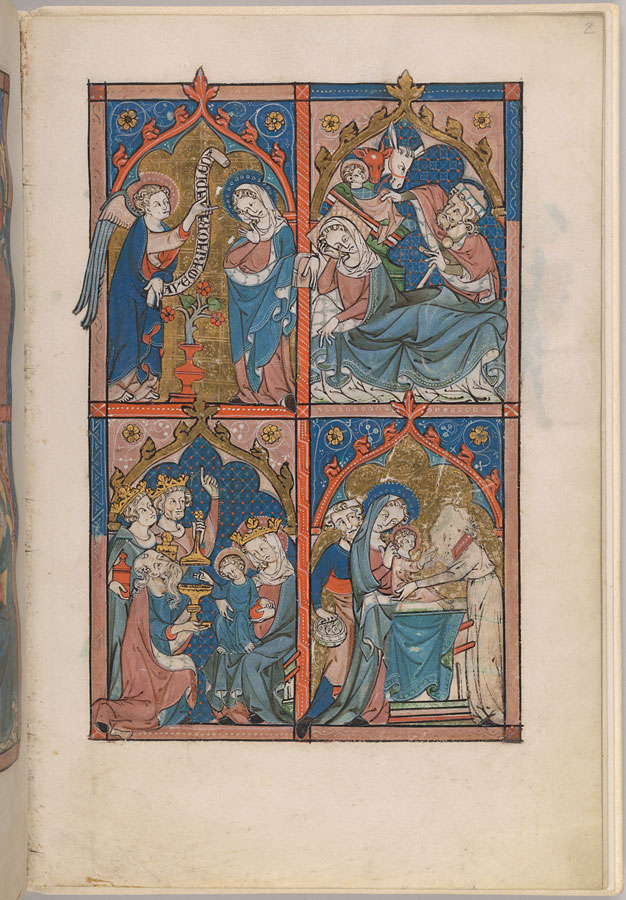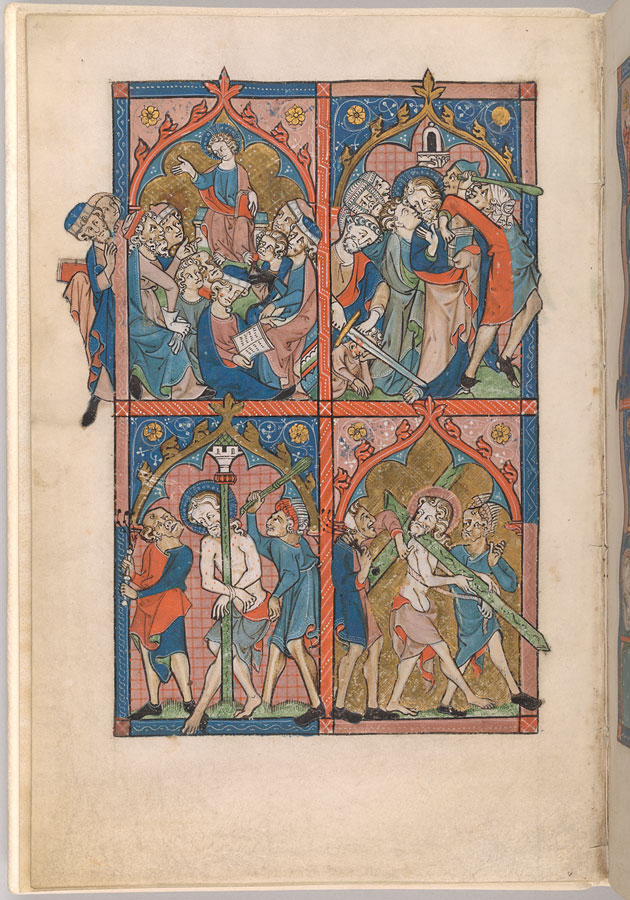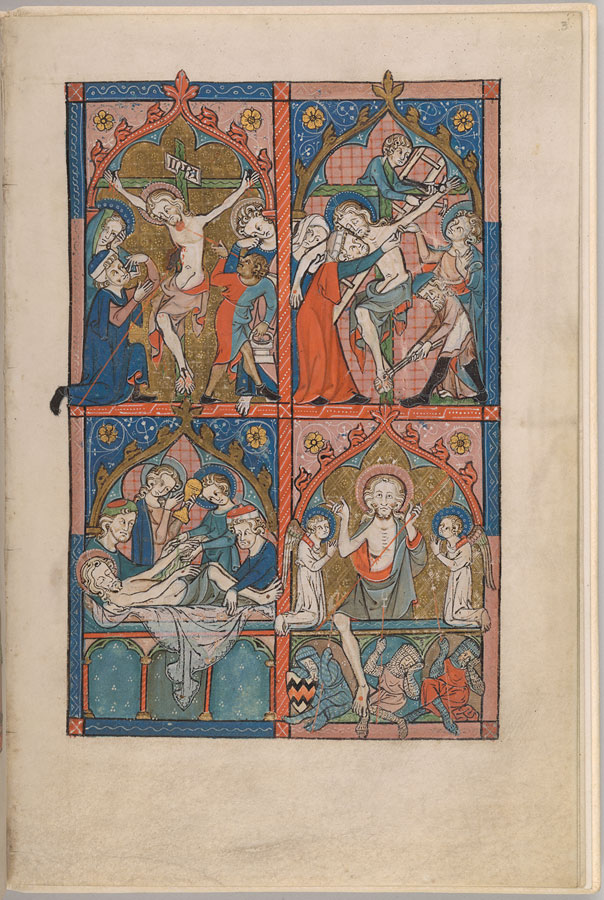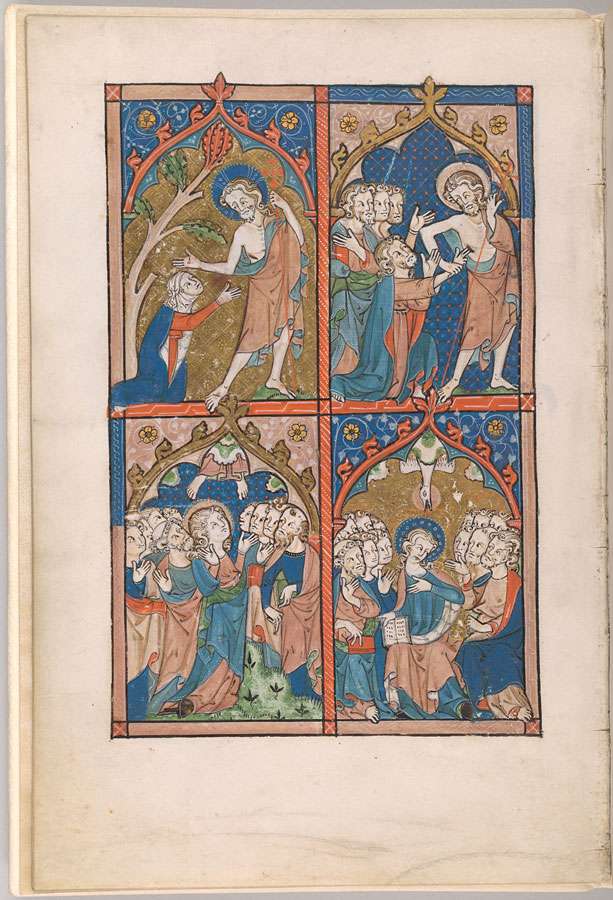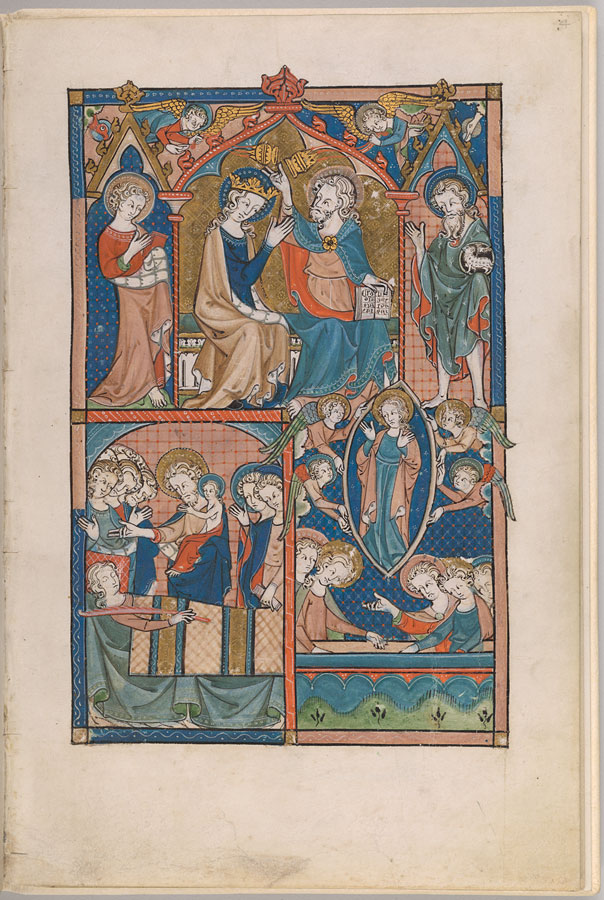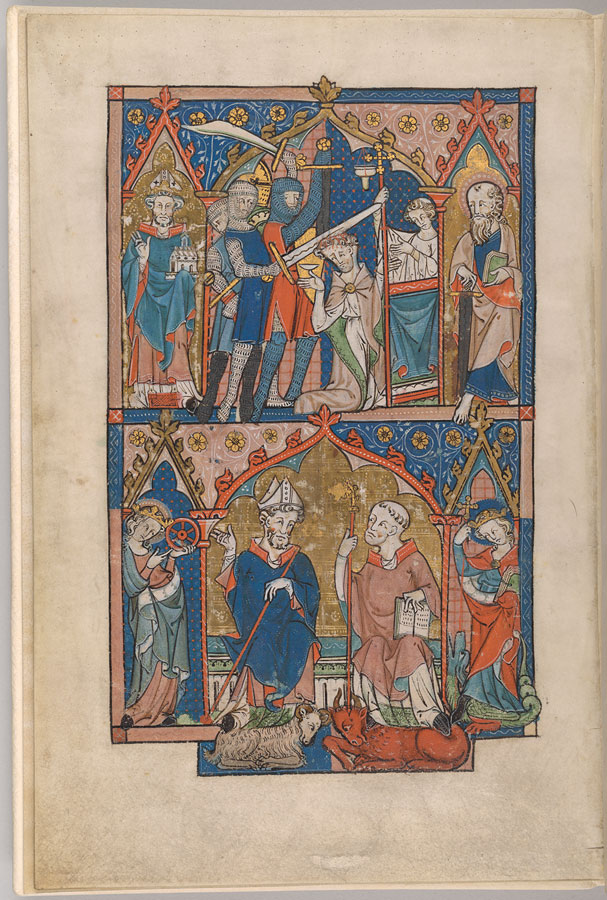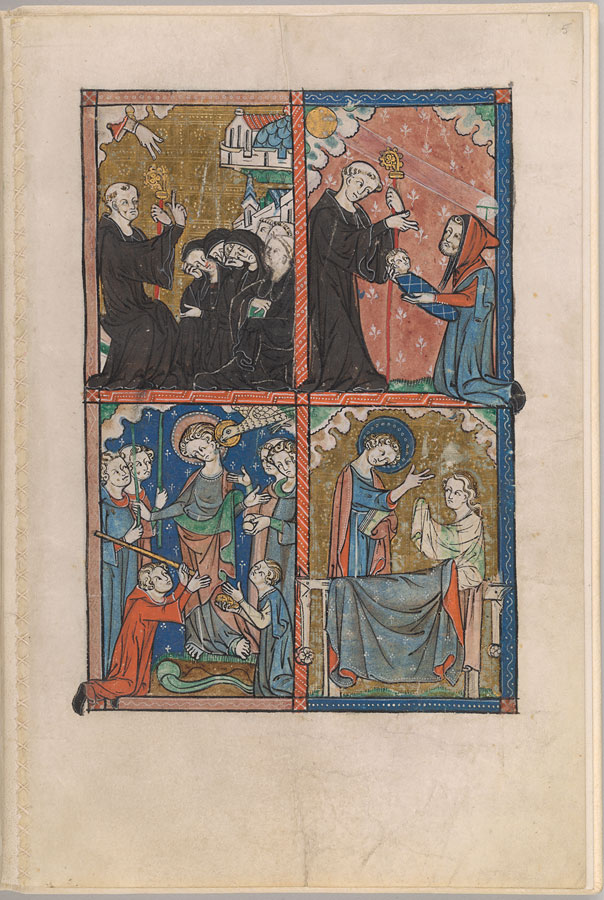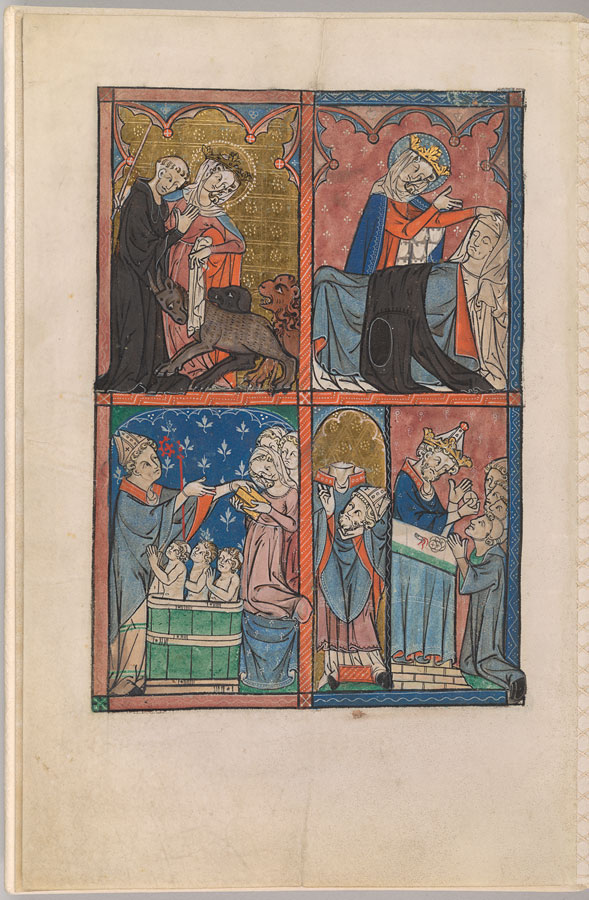Ramsey Abbey 1310 Psalter
The ten full page miniatures, shown below, are now owned by the Pierpont Morgan Library of New York, U.S.A. These and the other miniatures owned by The abbey St Paul in Austria, formed the complete 1310 Ramsey abbey psalter. The artist who created the drawings, it is thought, was a member of a workshop that produced illuminated manuscripts for two other main Benedictine monasteries in the fens, namely Peterborough and Crowland. He is referred to as the Ramsey Master, and almost certainly produced all the the images shown below. The style of the Ramsey psalter falls in to the category loosely called ‘East Anglian’. A term which is associated with a boldness and exuberance of invention, especially in marginal illustrations, of manuscripts.
The Ramsey Psalter, however is distinguished from East Anglian psalters by containing a series of full page miniatures. The series begins with Old Testament scenes, then follows a New Testament cycle, which ends with Death, Assumption and Coronation of the Virgin.
The last miniatures before the beginning of the psalter text comprise the group whose subjects pertain to Ramsey Abbey. This sequence of miniatures are split between The Pierpont Library above and The Abbey of St Paul in Lavanthal. The miniatures below, marked with the blue border, are the ones specific to Ramsey Abbey.
To see a larger image with a description, select an image and click.
This Psalter was given to John De Sawtry Abbot of Ramsey circa 1310 by William of Grafham, who was the Abbey cellarer, to be used at the Abbey. The manuscript contained the standard types of illustration for English Gothic psalters. This consisted originally of ten historiated (illustrated) initials, of which nine survive, owned by the Abbey of St Paul in Lavantthal Austria, and a series of full page miniatures of Old and New Testament subjects at the beginning of the volume, owned by the Pierpont Library in New York. At the end of this prefatory narrative cycle there is also a unique sequence of miniatures referring specifically to the history of Ramsey Abbey. These include scenes of its foundation, dedication, its benefactors, and episodes from the lives of its patron saints.
The subject of a number of the historiated initials illustrating the psalms at the liturgical divisions of the manuscript, are unusual in the sense that they, deviate from the standard themes for English psalters of the period. The deviations, lean more to the literal interpretation of the psalms, rather than to the Biblical one.
To illustrate the uniqueness of the Ramsey psalter, I include this description below for the initial of psalm 1.
The standard subject for the Initial starting Psalm 1, is David playing the harp, but in the Ramsey psalter David is displaced to the upper right margin. Within the initial itself is a crowded scene which can be described as follows: a King holding a fluer-de-lis topped staff sits uneasily on a throne – either about to sit down or about to get up. On the far right a young attendant, armed with a shield with frog insignia, presents the King with a spear. Behind these two figures is a crowd of on-lookers. On the left side of the of the scene the figures in another group raise their hands in salutation of the Lord, who appears above on the central axis, blessing and holding the globe. Finally, in the finials of the initial frame are personifications of the Church and Synagogue.
This composition is a literal illustration of the first and second verses of Psalm 1: ‘Blessed is the man who hath not walked in the counsel of the ungodly, nor stood in the way of sinners, nor sat in the chair of pestilence. But his will is in the law of the Lord, and on his law he shall meditate day and night.’ The King on the right turns to listen to the counsels of the ungodly, whose sinfulness is symbolised by the frog on the shield, while he hesitatingly sits in the chair of pestilence. At the left, the figures accept the law of the Lord, and there is further allusion to this law, or rather the Old Law and the New Law, in the personification of Church and Synagogue.
Such detailed , literal illustrations of the first psalm are of the greatest rarity in Gothic psalters

